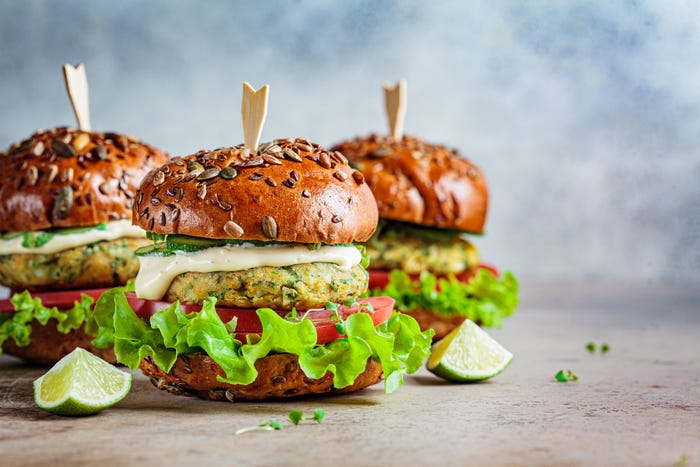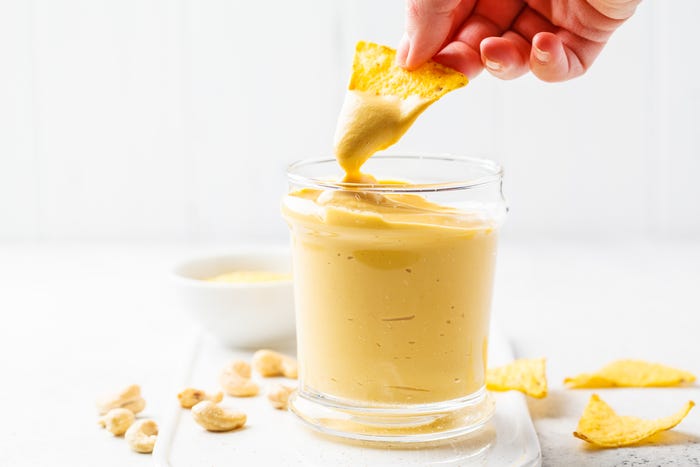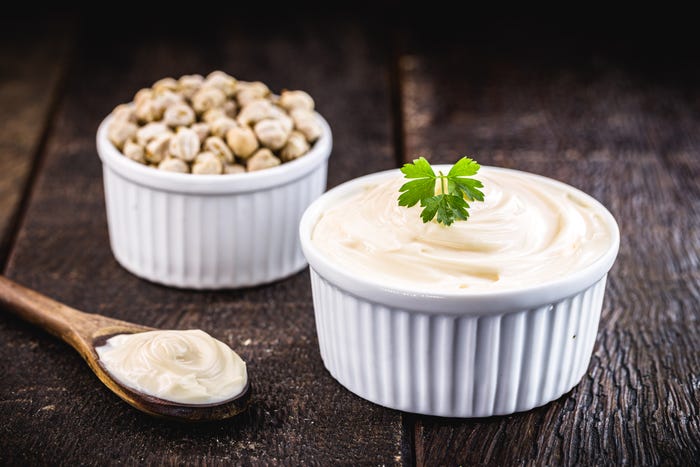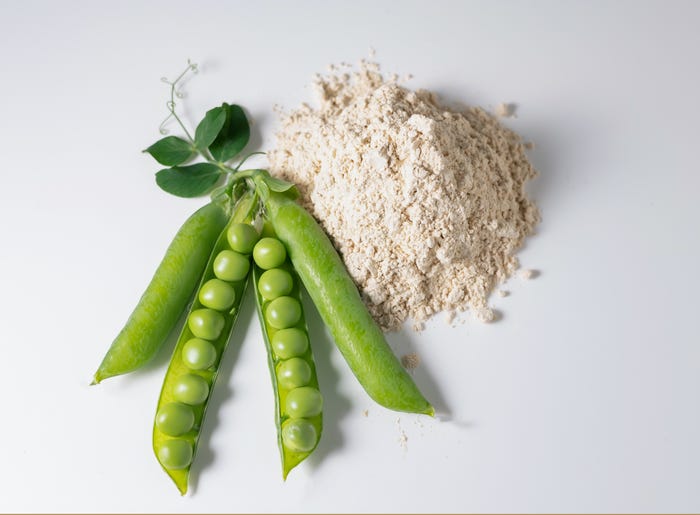Experts challenge notion of ultra-processed foods as unhealthy
While “ultra-processed” labels may raise concerns, judging food solely on processing ignores ingredient quality and promotes a misleading binary that hinders informed dietary choices, industry experts contend.

At a Glance
- Industry experts say there is a place for all types of processed food within a person’s diet.
- They also argue the number of ingredients doesn’t necessarily indicate whether a food is healthy or unhealthy.
- The overall nutritional profile of foods is more important than their labeling, according to industry pros.
A recent article in The Washington Post, “Look for these 9 red flags to identify food that is ultra-processed,” outlined nine telltales that can help consumers identify if a food is ultra-processed. It also detailed why these foods should be avoided at all costs.
The consumption of ultra-processed foods is contributing to diet-related diseases and higher mortality rates of humans worldwide, as various scientific studies have shown over the last decade. Certain “red flags” pinpointed in the article, such as the number of ingredients or presence of certain additives, however, aren’t indicators as to whether or not a food is healthy or unhealthy, according to a handful of industry experts.
What is processed food?
While about half of Americans (49%) turn to ingredient labels to decide whether a food product is processed, as evidenced by proprietary 2023 consumer research on processed foods from International Food Information Council (IFIC), the majority (70%) don’t even fully understand what a processed food is. Per IFIC’s research, only 3 in 10 people surveyed could clearly define a processed food.
According to the NOVA food classification system, developed in 2017 by Brazilian professor Carlos Augusto Monterio, Ph.D., MD, all food can be categorized into four groups:
Group 1: Unprocessed or Minimally Processed Foods
Fresh, dry or frozen vegetables, fruit, grains, legumes, meat, fish, eggs, nuts and seeds.
Group 2: Processed Culinary Ingredients
Plant oils (e.g., olive oil, coconut oil), animal fats (e.g., cream, butter, lard), maple syrup, sugar, honey and salt.
Group 3: Processed Foods
Canned/pickled vegetables, meat, fish or fruit, artisanal bread, cheese, salted meats, wine, beer and cider.
Group 4: Ultra-Processed Foods
Sugar-sweetened beverages, sweet and savory packaged snacks, reconstructed meat products, prepared frozen dishes, canned/instant soups, chicken nuggets, ice cream.
According to IFIC’s research, more than three-quarters (76%) of Americans said they consider whether a food is processed before they purchase it, and 6 in 10 people try to avoid processed foods.
IFIC also asked participants if they consumed processed foods — and the majority (more than 75%) said they do. More specifically, 94% of respondents said they eat processed foods in some manner (either “a lot of the time,” “some of the time” or “rarely”), with only 4% of respondents claiming they never consume them and 2% unsure if they do or not.
“If you say, ‘I’m going to avoid processed foods,’ you’re talking about growing food yourself and eating it raw,” Carlos Barroso, co-founder and CEO of Plantasia Foods, said. “That means no pesticides and no fertilizers. You’re back to picking nuts off the ground and berries [off bushes and trees], which you can do, but you’re probably also going to have malnutrition.”
The same goes for animal-based products, Barroso explained. “Unless you’re shooting your own elk, skinning it and preparing it yourself, that’s processing,” he said. “You’re eating processed food and that's the reality.”
A former SVP of R&D at PepsiCo. and SVP of global R&D and quality at Campbell Soup Co., Barroso has more than two decades of R&D experience in food and CPG, developing and introducing a range of food and beverage products worldwide. After working for multi-billion-dollar corporations for many years, Barroso entered the plant-based food industry with former Campbell’s colleague and current partner George Vutetakis, a long-time chef who owned a plant-based restaurant in Detroit for 20 years prior to entering the corporate world. Vutetakis is the former director of R&D at Garden Fresh Gourmet Foods Inc. He worked in Campell’s fresh food division, as well as the global science and technology department developing vegan and plant-based options for the company after it purchased Garden Fresh Gourmet Foods Inc. in 2015, which is where he met Barroso.
“When I worked at Campbell’s, we looked at foundational plant-based ingredients and we were starting to work on programs that were really changing the game,” Vutetakis, co-founder and CDO of Plantasia Foods, said. “We were really at the cutting edge of a lot of the research and looking at all the different possibilities, not just defaulting to whatever ingredient gets you there.”
“More than three ingredients”
One indicator that a food is ultra-processed, which The Washington Post’s article addresses, is more than three ingredients. While plant-based foods can technically be categorized as processed/ultra-processed foods under NOVA’s classification system, Vutetakis, who also founded plant-based company Only Plant Based! Foods in 2020, detailed how the development process for plant-based products is vastly different than that of their animal-based counterparts.

“Things work a little differently in plant based, and that’s one of the challenges that a lot of people have had in making that transition to make products that are plant based,” he explained. “Instead of using one ingredient, you’re using five or six to get [your desired formulation], and the thing is, that’s the standard.”
Sarah Fitzgerald, food scientist, product developer and “culinologist III” at CuliNEX, echoed Vutetakis’ comments. “Most plant-based foods, but not all, have three or more ingredients,” she said. “Elmhurst 1925 does make incredible two-ingredient plant-based milks, but even their Barista Blend has five ingredients. If you restrict yourself to three ingredients or less, you’ll be missing out on a lot of great products. And it just sounds so bland.”
Interestingly, most consumers surveyed in IFIC’s 2023 research believe animal-based products are the most processed foods. More than two-thirds (68%) believe canned meat is processed, with a similar contingent (66%) that believes deli meat and beef jerky is processed. Just over half (56%) of respondents believe canned seafood varieties are also processed. Less than half of people surveyed (49%), however, believe plant-based meat alternatives are processed.
“It’s hard to argue that we don’t process our foods on the vegan side, but compared to visiting a slaughterhouse or fish farm, I will take my pea protein and cellulose gum,” Barroso said. “If you go through the whole supply chain … even if you say, ‘I’ll eat grass fed meat,’ it doesn’t start out as grass fed. It starts out with all kinds of inoculations and drugs. Most of the meat people are eating — chicken, beef, pork — is processed. I personally have no issue with most GMOs, but it is certainly processed.”
“Thickeners, stabilizers or emulsifiers”
The second sign that a food is ultra-processed, according to the article, is the presence of thickeners, stabilizers or emulsifiers.
“I have used all three when creating a plant-based cheese, but my deliverables differ from the home cook,” Fitzgerald explained. “I needed to make a plant-based cheese that behaved like a dairy cheese and could withstand the shelf life needed for grocery stores. The simplest, whole food, plant-based cheese can be made without these ingredients, but it’ll still require more than three ingredients. Plant-based foods can be complicated if you are looking for the same experience of its dairy counterpart. In my daily life, I do eat emulsifiers, stabilizers and thickeners, but I don’t eat sprouts; we all have our reasons.”

Food thickeners, one of the major food ingredients that control textural properties of foods, are obtained from various raw material sources, from marine plants to animals. Thickening agents also provide structure, flow and stability of food products, according to scientific research, which is essential for both plant-based and animal-based foods.
“I am a fan of thickeners, stabilizers and emulsifiers for plant-based products,” Fitzgerald said. “The textures they deliver can be incredible. If one is so inclined to test these at home, there are great options in the grocery store: flours, starches, xanthan gum, guar gum and even lecithins. These ingredients expand the options for those who eat plant based and/or have other dietary restrictions. Yes, you can eat a plant-based lifestyle without these, but I’m not going to let it stress my grocery trips.”
Only Plant Based! Foods’ vegan mayonnaise incorporates xanthan gum — an additive used as a thickener, stabilizer and emulsifier — to achieve the desired texture and taste of conventional mayonnaise. “It’s a challenge to get [mayonnaise] right, even if you are using eggs,” Vutetakis said. “First of all, the oil makes a tremendous difference, as well as the stability of the oil and how it interacts with the emulsion and how it stays fresh.

“What we’re finding is that most oils go rancid quickly and they don’t hold that balance,” he explained. “They don’t have the same folding properties. Then you have starches, gums and things like that. The idea is to use as little of that as possible with the greatest effect, but you have to still have it hold. Our product is shelf-stable, and it has a one-year shelf life. So, how do you have it hold for a year? And how does that work?”
“Added sugars and sweeteners” and “Ingredients that end in ‘-ose’”
The third and fourth “red flags,” respectively, address added sugars and sweeteners. The Dietary Guidelines for Americans — which provide advice on what to eat and drink to meet nutrient needs, promote health and prevent disease — are updated every five years by USDA and Health and Human Services (HHS). According to the 2020-2025 Dietary Guidelines, it is recommended that Americans 2 years old and older keep their intake of added sugars to less than 10% of their total daily calories.
The Washington Post article identified corn syrup, cane sugar, malt syrup or molasses (as added sugars and sweeteners), as well as sucrose, maltose, dextrose, fructose or glucose (as ingredients that end in “-ose”) — ingredients commonly seen on ingredient labels — as culprits in these categories.
“Half [of these ingredients] are sugar,” Fitzgerald said. “Of course, there are various sugars in plant-based products. For example, these are sometimes added to mimic the sweetness of lactose in milk. Milk is a food with an ‘-ose’ sugar, but it’s not called out because it’s naturally [present] in milk. In plant-based foods, there are a lot of things not naturally in the product; it has to be built from the ground up (hence added ingredients and an ingredient line).”
“Could you make it in your kitchen?”
Barroso said most ingredients in Plantasia Foods’ products, and some other plant-based products, are present in the average American’s kitchen, despite what many people may think. Integral ingredients like plant-based proteins, however, are not — and understandably so. “Most of the items [in our products] are things you would find in your pantry,” he said. “But you can’t make pea protein in your kitchen. And you can’t make cellulose gum in your kitchen.”

The processes used to create Plantasia Foods’ products also aren’t as processed as many consumers may believe them to be, a point highlighted in the article. “We’re taking the ingredients, mixing them and doing some special things to them,” Barroso said. “We mix them in something that looks like a big KitchenAid mixer. We then form them into patties. We don’t do it by hand; we do it with a little machine that makes patties. After that, we put them in an oven and then freeze them. It’s not that exotic. You could do it in your own kitchen; you just have to have the ingredients.”
This final “red flag” should really highlight the degree of processed ingredients that people have in their kitchens, not just if they’re able to prepare it themselves. As Barroso pointed out, are people using whole foods and raw ingredients foraged from nature to prepare all their meals or are they utilizing a range of processed meat, dairy and frozen/canned products to achieve the final product? It all circles back to the crux of the issue — what exactly is processed?
“Let’s take a step back and look broader at the article message; in essence, it associates ultra-processed food with junk food,” Fitzgerald said. “To create a junk food-halo around all ultra-processed food is outdated in 2024. A better focus would be to discuss food options based on fat/sugar/salt levels, and not degree of processing.
“I think people forget to look at the big picture of food sometimes,” she continued. “There is a place for processed food, ultra-processed food and whole food within our food landscape. There is a place for genetically modified and non-GMO foods. Food for a person is more than physical health — it’s mental and social health as well. Yes, most foods are processed to some degree; it is a linear line that you can plot food along. But that same simple line shouldn’t be used to put food on a scale from good to bad or healthy to unhealthy.”
About the Author(s)
You May Also Like






